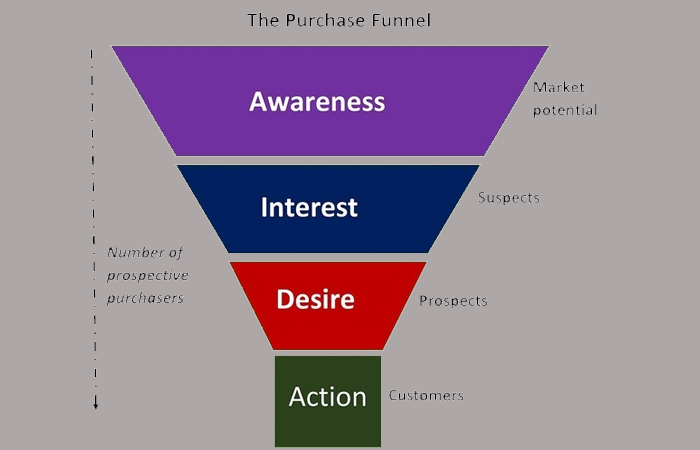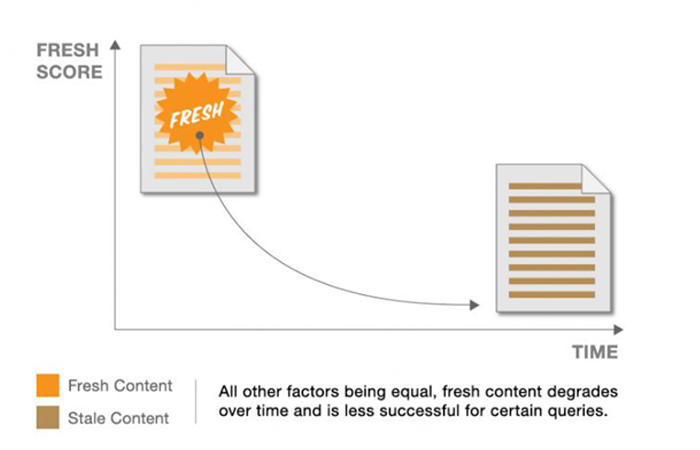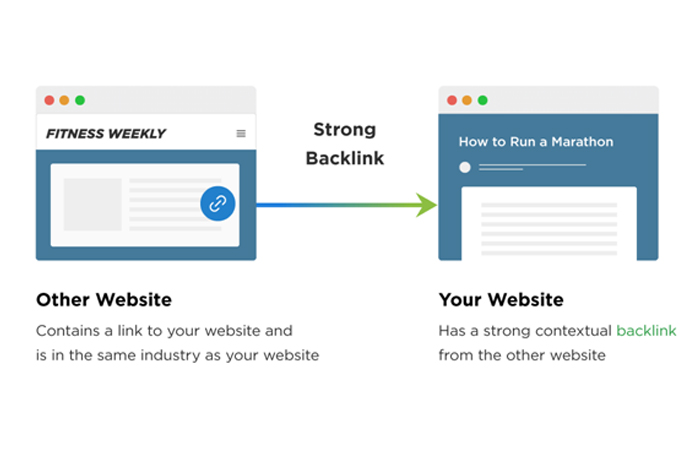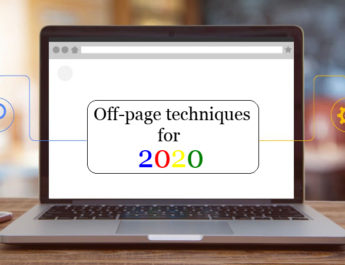Small businesses more often opt for DIY search engine optimization to save money. However, they mistakenly leave numerous vulnerable aspects of SEO that ruin their entire SEO efforts and bring their output to zero.
Saving money is one aspect of growing a small business, but putting in-house efforts in the wrong direction is worthless.
Ranking on search engines isn’t challenging in today’s competitive scenario. However, omitting SEO mistakes can help small businesses save money and help them earn good rankings in search results.
Without discussing further, let’s dive into the 21 common SEO mistakes that small businesses should avoid.
-
Table of Contents
Using Copied Content:
Content has now become the root of numerous SEO tactics. It won’t be false to say that almost every SEO tactic relies on content writing to some extent. It means you need fresh, crisp, and quality content every time you put your efforts into growing the organic rankings.
However, many small businesses prefer saving time and steal content from other websites. Using copied content raise three big issues for Google i.e.
- Who is the actual owner of that content?
- Which webmaster to rank over the other?
- Which content retains high trust, authority, and link equity?
Nowadays, Google is smart enough to determine the father of content that makes it convenient to penalize copycats.
Google always prefers creating unique content that people would love to read and share. Hence you should never use copied content for your website/business branding.
-
Stuffing Content with Keywords:
Yes, keywords play a vital role in building trust and link equity to your web pages. This doesn’t mean flooding your content with keywords.
Keyword Stuffing is the basic terminology that is known to everyone in the digital marketing industry. Adding a plethora of keywords without need and direct relation with the content is always a bad practice.
Many small businesses consider keyword stuffing as a tactic to get rankings on keyword loops within a short interval of time. However, this is a misconception that multiple keywords within a content help it in ranking.
Instead, such practices are no longer in use, and Google strictly penalizes such websites.
Common examples of keyword stuffing include:
- Lists of phone numbers without substantial added value
- Blocks of text that list cities and states that a webpage is trying to rank for
- Repeating the exact words or phrases so often that it sounds unnatural.
-
Duplicate Meta Tags:
Meta tags are the snippet of your webpage that helps Google better understand your page. Metal tags are used to show the best possible preview of your website in the search results.
Commonly used meta tags are:
- Title Tag: Title tag is the unique title of your page
- Meta Description: Description of the content on the page
- Viewport Tag: impacts how your content appears on mobile devices
- Meta Robots: Used to indicate the indexing and crawling status of any webpage (“noindex” or “nofollow”)
- Hreflang Tags: Allows the search engine to identify website language and location
- Canonical Tags: Specify the primary version of dynamic pages
- Open Graph Tags: Used to show a preview of your webpage on social platforms.
Among all mentioned above, small businesses go with the same title and Meta Description on most of the web pages. This results in multiple web pages competing for higher rankings.
Note: Google can skip your custom meta description and show the best-suited content from your website.
Still, you should attend to this issue and ensure all web pages have unique and relevant meta tags.
Screaming frog is the perfect tool to determine an entire list of pages with duplicate meta tags.
-
Untreated Broken Links
Whether you have inbound links or outbound links, you should always ensure no URL is broken in any way.
A broken link is defined as any link that ends on a 404 page. The page is no more available. Multiple reasons contribute to the broken link, but deleted pages are the prime reason that creates broken links.
Broken links don’t have a direct negative impact on your website. However, it has a significant effect on the user experience. Further, Google considers dead/broken links as a bad practice. Broken links also restrict the flow of link equity throughout your website.
Numerous free tools and extensions are available to find broken links (internal & external):
- Sitechecker
- Semrush
- W3C Link Checker
- Online Broken Link Checker
- Dead Link Checker
- Link Check .com
- Xenu’s Link Sleuth
- Integrity Link Checker
- Google Webmaster
- WP Broken Link Status Checker
- Screaming Frog
- Ahrefs Broken Link Checker
Use it to find all broken links and treat them immediately to maintain the website’s authority.
-
Neglecting Data From Google Analytics
Many small businesses focus entirely on devoting their sweat and veins. However, they forget to heed how customers/users react to their website.
Google Analytics is the free & finest tool that can help you dive into the user behavior and website’s performance.

Source: https://yoast.com
Analytics gives you unbelievable data that can be used to prepare your marketing strategy and build awesome results for your business. Here are some excellent data that Google Analytics can give you.
- See the top landing pages on your website.
- See the Source of traffic and which traffic is performing the best.
- Check user flow (showed in the above image)
- Find the number of conversions (through Event Tracking)
- See the countries/state/area that provides maximum traffic.
Numerous other data can be derived from Google Analytics. Every business must use the data from GA to plan their next marketing strategy and experience a marvelous spike in traffic.
-
Ignoring ALT Tags
Alt Tags, aka Alternative Tags, are the attributes to HTML tag IMG that describe the image. Every webpage has multiple images which can be seen by customers/users. However, Google can’t see the images; hence it prefers Alt Tag to understand the image.
Using ALT tag benefits you in multiple ways:
- It helps Google better understand your image
- It is displayed when an image is not loaded (due to weak internet)
- It helps in getting traffic from Google Images
Small businesses don’t consider Alt tag a crucial component of SEO tactics and hence lack additional traffic.
Tips for writing ALT Tag:
- Be specific and succinct.
- Never start with “Image of …” or “Picture of …”, etc.
- Use keywords sparingly
- Include text that’s part of the image
- Don’t repeat yourself
- Don’t add alt text to ‘decorative’ images
- Don’t flood irrelevant keywords in the image Alt.
- Not Writing For Readers:
What’s the purpose of creating a website and writing tons of content? Well, its none other than entertaining your customer’s/reader’s queries.

Source: https://mk0abtastybwtpirqi5t.kinstacdn.com
From the image above, you can better understand the user journey before making any purchase. Every content you create for online promotion or your website revolves around the above-listed motives.
Still, newbie businesses focus on developing content, regardless of their motive. This results in worthless content that is ineffective in driving awareness and sales for your business.
-
Lack of Audience Research:
No strategy is effective without thorough research and analysis. Until you don’t know your audience, it’s tough to serve them in a better way. In the digital marketing industry, it’s crucial to invest time in knowing your audience and create a customer-driven marketing strategy.
Hit and trial have no place in online marketing for business growth. Small businesses only have one target, i.e., developing content and promoting their business, regardless of what the audience expects and what they don’t.
Catering your audience with incorrect data is equivalent to zero work done.
You can take advantage of freemium tools to understand your audience and create an effective strategy accordingly.
-
Poor Keyword Selection
Keywords are the red blood cells of every content. Without quality RBC, you can’t think of human life. Simultaneously, you can’t think of getting the most out of your content without quality keywords.
Right keywords in the correct quantity at the right place can do wonders for your content. Here are some tips that will help you find the right keywords for your content.
- Think like a customer
- Study the competition
- Understand the long tail keyword
- Use keyword research tools
- Analyze the results
Google keyword planner is the perfect (free) tool to search a list of effective keywords for your business. Smart use of keywords is the right way to get significant traffic through your content writing & marketing efforts.
-
Neglecting Your Website’s UI
The website’s user interface plays a significant role in engaging the customers/users and increasing your conversion rate. With time, the web development industry trend changes, and hence your website does require the same changes to outrank your competitors and serve the best UI.
Still, small businesses don’t heed the UI part and continue serving on a stale website which adds no value to your efforts. Instead, it adversely affects the user’s journey.
Not many know, but SEO is affected by the user experience. Currently announced Core Web Vitals is one of the finest examples. Google has released the update and announced to add the website’s performance as a ranking factor in SERP.
-
Not Optimizing Local Listing on GMB:
Google My Business is highly effective in driving traffic and sales from local audiences. However, small businesses skip handling the local business listings (especially GMB), making it tough to keep serving local customers.
If you are running a local business, skipping GMB listing is equivalent to putting your efforts into vain. Hence, keep targeting your local listing and maintain them with the latest business updates. Follow these tips to optimize your GMB listing:
- Verify your business
- Fill out your profile completely
- Make sure your profile information is (and stays) accurate
- Ensure nap consistency across the web
- Pick the most relevant categories
- Include semi-professional pictures
- Get more reviews
- Take advantage of posts on google
-
Not Updating Old Content:
Writing content is a great way to solve customer issues. However, one big mistake small businesses make is neglective old content. Leaving old content as-is is a big mistake that does not affect you adversely. Instead, you miss out on additional opportunities w.r.t traffic and potential customers.
Skipping old content is a big mistake small businesses owners make more often. They focus more on generating new content without building authority via old content.
Here are some tips that can help you update old content and bring it back to competition.
- Find the list of pages to update
- Do keyword research for new pages
- Analyze your landing page (via Google Analytics or other tools)
- Improve your headline (if required)
- Update your content (make tweaks; don’t rewrite whole content)
- Keep OnPage SEO in mind
- Add Calls to Action

Source: https://s3-torquehhvm-wpengine.netdna-ssl.com
-
Targeting Multiple Pages for Same Keywords:
Many of you are already familiar with the term Keyword Cannibalization. However, newbie business owners won’t be aware of this terminology that significantly impacts their digital marketing efforts.
Google always prefers a best-suited landing page from your website for a particular keyword. But what do you think happens when you target multiple web pages for a single set of keywords?
That’s known as keyword cannibalization. You should always focus on targeting a specific set of keywords for a particular landing page.
It helps Google to evaluate your landing pages better and give them rankings accordingly.
You can read about Keyword cannibalization here.
-
Over Optimizing Your Website:
Yes, website optimization is essential to keep rank higher in the search results. However, over-optimization can cause a lot of trouble for your website.
With over-optimizing, you create limitations for your website and hence don’t earn the expected online presence. But, what are the signs of an over-optimized website/blog?
- Using non-relevant keywords
- Targeting only single link building tactics
- Considering non-branded keywords and skipping branded keywords
- Adding too many internal links
- Pointing all internal or external links to top-level navigation pages
- Creating keyword-stuffed footer
-
Not Adopting Google Webmaster Guidelines:
Google has officially released the webmaster guidelines that can help you in building an SEO-friendly website. Click here to learn in-depth about webmaster guidelines.
Regardless of official guidelines offered by Google, small businesses looking for quick ways to boost their online presence. In hunger for a high organic presence, businesses get penalized and lose their efforts.
You should check general guidelines, content guidelines, and quality guidelines to find the best and legit way of online promotion.
Following the given guidelines will help you get quality and long-lasting results.
-
Following Black Hat Tactics:
Following back hat SEO practices isn’t new in today’s competitive era. Everyone wants top ranking in the SERP, and except Paid Ads, blackhat tactics are the option you are left with. With black hat practices, you undoubtedly get some instant hike in ranking or traffic, but this doesn’t last for long. Common black hat tactics that you should never add to your marketing strategy includes:
- Cloaking
- Reporting a Competitor (or Negative SEO)
- Link Schemes
- Keyword Stuffing
- Sneaky Redirects
- Doorway Pages
- Content Automation
- Hidden Text or Links
-
Considering SEO as One Time Efforts:
SEO is a continuous process of improvement and refinement rather than a one-time thing. It’s not like you’ll do it once and have the benefits for the rest of your life. Search engine optimization is for optimizing your website according to search engine guidelines and becomes best to secure the top rankings. However, being the best is not constant, and someone else can beat you if they make better efforts. So, instead of considering it as a 6-12 months thing, you should take SEO as an essential process to have fruitful SEO results consistently. Small businesses often make this SEO mistake and lose a plethora of business opportunities. So, make SEO your constant to make a reliable and sustainable source of organic traffic.
-
Not Tracking Your Efforts & Results:
Whether you are ranking on your target keywords isn’t the only way to track your SEO progress. Initially, it takes 6-12 months or more to see the ranking, depending on the competition. So, in this timeframe doing SEO blindly without tracking your efforts can be counterproductive for you. It’s possible that you work on the wrong or less efficient strategy and may not get the desired SEO results.
So, it’s crucial for you to set some KPIs so that you can monitor your SEO efforts and modify your strategy accordingly to achieve the potential results.
-
Lack of Authority Backlinks:
Backlinks are an integral part of the SEO strategy and one of the prominent ranking factors of Google. You must have a strong backlinks profile to perform well in the online search results.
Backlinks are valuable but as long as they have quality. One quality backlink is way more fruitful than the hundreds of low-quality or spammy links. So, it’s better to focus on quality or quantity for your site backlinks to fetch some exceptional SEO results.

Source: https://mk0apibacklinkov1r5n.kinstacdn.com
Read More: Link Building Techniques: The Good, the Bad, and the Ugly
-
Skipping Website’s Performance (Slow Website Speed):
Search engines prioritize the user’s experience more than anything, and poor website performance doesn’t agree with it. Whether it is slow website loading or sluggish website response, it annoys the users and makes them leave your site. This increases the bounce rate of your site, and Google reduces your rankings in search results. Hence, you are making a huge SEO mistake if you are overlooking your website performance. Google and other search engines want you to serve your users best, and you’ll get the top rankings as a reward. Google even recently rolled out a new ranking factor, i.e., Core Web Vitals, which focuses on the page user experience. So, you can’t do well in rankings if your site performance is below the bar.
Read More: 7 Tips to Improve Your Core Web Vitals Scores & Page Experience Signals
-
Neglecting Mobile Responsive Version:
As mentioned earlier, user experience is the main concern of the search engines; mobile performance also matters. Today mobile usages are way higher than any other device, and people use mobile for online searches as well. Hence, it’s vital that your website works perfectly on mobiles to give the best browsing experience to users. The above image also shows that mobile-friendliness is a ranking factor as well. So, it’s necessary that you work on your mobile performance along with desktop performance. Top rankings on mobiles can give you the highest traffic than any other device.
You may use the responsive web design to make your site look and work correctly on all screen sizes. It’s the most efficient way to become mobile-friendly and has beneficial results. You can use the Google Mobile-Friendly Test tool to check your mobile compatibility and know the scope of improvement.
So, these are the commonly made mistakes by small businesses. If you are planning in-house SEO practices, ensure not to commit these mistakes. Firms with no experience in digital marketing must strictly work with offshore online marketing firms that can better manage the SEO efforts and take your business to new heights.
Prefer hiring a legit and reliable digital marketing firm that has already served ample clients in the past. Remember, investing in the right team is vital to boost ROI for small businesses. Hence, you should pay keen attention to hiring the right marketing team to boost your business visibility and grow your profit.




